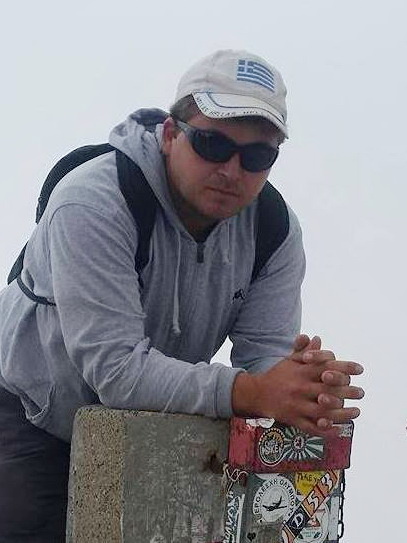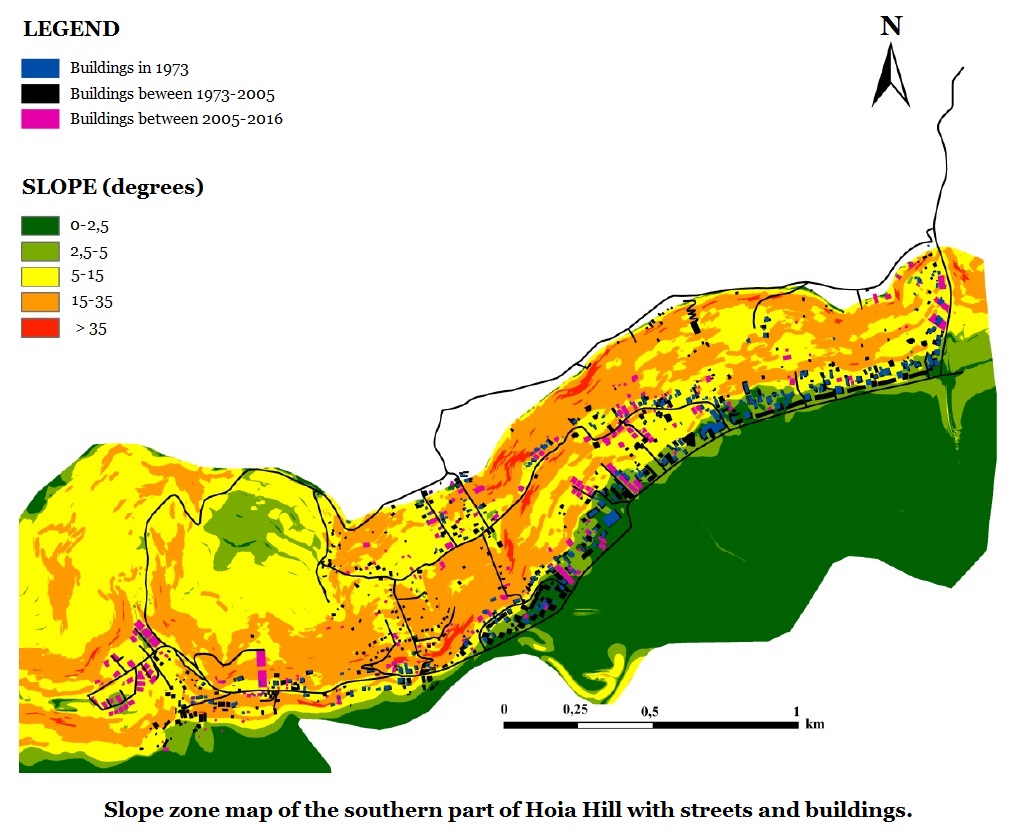Home / Research with students /
11/08/2018
Investigating the effects of urban development on the north and south slopes of the Hoia Hill in Cluj-Napoca
Student: Gellért Varga
Scientific advisor: Szilárd Poszet, PhD, assistent professor

The Hoia Hill is situated in the north-western part of Cluj-Napoca, and has an area of 400-450 hectares. The extent of the built area of the Hoia Hill has changed a lot in the recent decades, both in residential and industrial areas as well. The most built area is the southern slope of the hill. On the superior section of this slope, the former vineyards were gradually replaced by buildings, only a part of the hard-to-build areas remained untouched. Today almost the entire slope is full of buildings. The lower section of the northern slope was cut off to provide space for the development of the industrial zone leading to reactivation of landslides. The most recent one happened in November 2015 when a mass of about two-hectares began to move.
We studied the development of the building processes in the southern slope of the hill, using maps from different times (austro-hungarian map showing the situation of the period 1763-1941 (http://mapire.eu), 1:5000 topographic maps dating from 1973, ortophoto from 2005 and Google Earth, version of May 2016 (https://www.google.com/earth). We found out that in 1973 were present 308 buildings, in 2005 this number increased with 248, and until 2016 another 237 buildings were added. According to the geoengineering classification of the areas, the situation in 2016 can be characterized as follows: 21.3% of the buildings were situated in the areas with no risc (slope < 5°), 77.9% were found in areas with medium risc (slope 5-35°), but there were some houses which were built in the areas with high risc.

In conclusion we can say, that the southern slope of the Hoia Hill was built in rapidly in the last four decades (an increase in the buildings of ~257% comparing with 1973), the half of the new buildings were built just in the last one decade. Being aware of the high throw potential of the studied area, the pressure of the buildings on the soil, the increasing road traffic and the weather extremities, the risk of a new throw must be considered.










